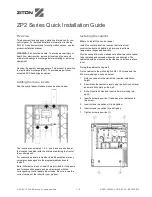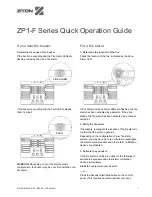
Page 27 of 27
12.5 Overview
Below a summary of the results:
Test Description
Test criteria reached (time in minutes, seconds)
FED = 1
@ 1.8 m
FED = 2
@ 1.8 m
FED = 1
@ 0.6 m
FED = 2
@ 0.6 m
8m x 4m room
with open doors
Automist @ 5m* Not reached
Not reached
Not reached
Not reached
Automist @ 8 m 3 m 3 s
(heat)
3 m 13 s
(heat)
Not reached
Not reached
Free Burn
2 m 19 s
(heat)
2 m 27 s
(heat)
Not reached
Not reached
8m x 4m room
with
closed doors
Automist @ 8 m 23 m
(heat)
Not reached
Not reached
Not reached
Free Burn
3 m 40 s
(heat)
12 m 53 s
(heat)
7 m 30 s
(heat)
21 m 3 s
(heat)
4m x 4m room
with
closed doors
Automist @ 3 m 25 m
(asphyxia)
Not reached
28 m 17 s
(asphyxia)
Not reached
*Test was not run until completion, based on partial results
In a closed room, Automist improved survivability in both room sizes, increasing time to incapacitation by
a factor of 6 and avoiding fatal conditions. In an open room scenario, Automist, at a distance of 5 m, was
able to avoid unconsciousness and incapacitating pain from heat. When Automist was placed 8m away in
a well ventilated room the effectiveness was reduced due to excessive secondary oxygen supply to the fire
from the closest open door. Automatic door closer and/or retainers are a low cost addition which can be
used to increase the effectiveness of Automist’s ability to offer volume protection in rooms over 4 m x 4 m x
2.5 m or spaces susceptible to draft.
The Automist system was able to demonstrate an improvement in the room heat and asphyxiant gas
conditions and the extent of fire damage in all the tests which an unsuppressed scenario was compared,
extending the time taken to reach FED calculated human tenability levels.





























